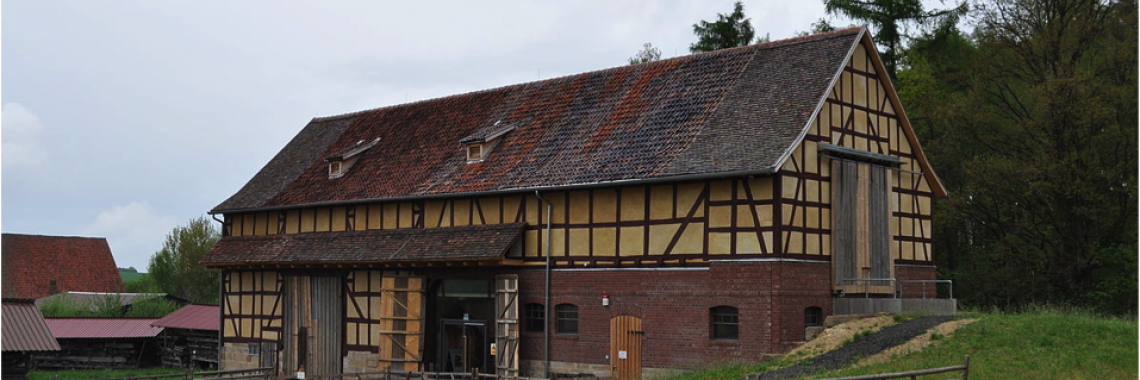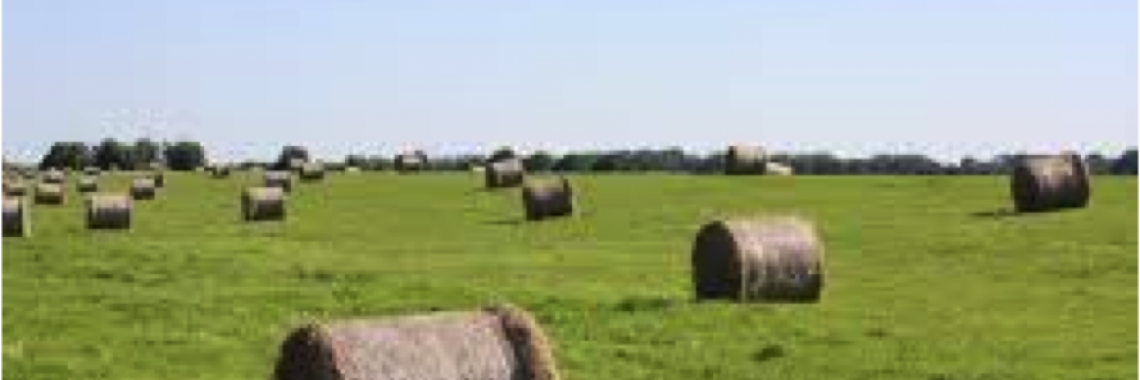Hay making structures in Germany
28.09.2017, by Bénédicte Gaillard
Research: Alexandra Kruse; upload: Bénédicte Gaillard. The entries are still in process.
Farmers – 100 % a wanted product on meadows
More or less all over Germany, getting lees important due to silage
2-6 grass cuts/year, the first is called „hay cut“, 2nd and 3rd may be used for hay as well
Fire and fire protection from 18th cent.
Mechanisation
Today appreciated for cheese production
horses, pets but also under cultural land-
scape (quality) aspects; alternative medicine
Steven R. Hoffbeck (2000). The Haymakers: A Chronicle of Five Farm Families. Minnesota Historical Society Press. pp. 29–32. ISBN 978-0-87351-395-1.
"Haystack – Define Haystack at Dictionary.com". Dictionary.com. Dictionary.com, LLC.
Falk, Cynthia. Barns of New York: Rural Architecture of the Empire State. Cornell University Press. pp. 108–109. ISBN 0-8014-6445-5.
Francis, Irv E.). About Dreams and Memories on the Old Farm. AuthorHouse. p. 71. ISBN 978-1-4634-4959-9
Tresemer, David Ward (1996). The Scythe Book: Mowing Hay, Cutting Weeds, and Harvesting Small Grains, with Hand Tools. Alan C. Hood. p. 53. ISBN 978-0-911469-14-1.
Ernst, Lisa; Swaney, Alexandra. "The Beaverslide: Homegrown Haying Technology". Folklife. Montana Arts Council.
HEU, n. foenum. In: Jacob Grimm, Wilhelm Grimm: Deutsches Wörterbuch. Hirzel, Leipzig 1854–1961 (woerterbuchnetz.de, Universität Trier).
EMDE, n. chordum, grummet. In: Grimm: Deutsches Wörterbuch. Hirzel, Leipzig 1854–1961 (woerterbuchnetz.de, Universität Trier).
Mit Rucksack und Sense in die Maulbeerau. -Die Heuernte wie sie früher einmal war–. Rathaus Bürstadt, 10. Februar 2004, archiviert vom Original am 21. Juli 2012, abgerufen am 21. Juni 2013 (Der Wiesbalken war ein mehrere Meter langer Rundholz–Balken, welcher über das Fuhrwerk hinausreichte. Die Windelöffel waren „paddelförmige“ Bretter welche in die Seilwinde gesteckt und zum Spannen benutzt wurden. Die Seilwinde selbst, war ein achteckig gehobeltes Rundholz, welches an den Enden gelagert war. Das Rundholz hatte um 90° versetzte Langlöcher, in diese Langlöcher wurden die Winde–löffel abwechselnd gesteckt. Durch drehen des Rundholzes wurde das Seil gespannt.).
Heumilch – ein Marketingschmäh?. In: Wiener Zeitung, 1. Oktober 2010.
Dr. Hans Oechsner: Besichtigung der Pilotanlage zur Heuverbrennung. In: ALB-Fachgespräch Holz, Getreide & Co. ALB Baden-Württemberg e.V., abgerufen am 21. Juni 2013 (PDF; 519 kB).
It exists in many, nearly in all parts of Germany
Regional:
river valleys
hilly regions
mountain regions
flat areas
No category for Hay meadows in our famous “Landscapes to be protected in Germany by the National Agency of Nature Conservation” (no meadows at all.)
Corine landcover: 231 Pasture, meadows and other permanent grassland under agricultural use
Semi-intensive (e.g. meadows)
Intensive (e.g. pure cutting greenland)
In some regions today dominant landscape type, where agricultural field production has stopped. But horse keeping is kept and meadows as part of the cultural landscape
Is it connected to
a special soil condition (substrate): no
a certain altitude: no
Climate: no
Hydrology: not really
Slope Aspect: no – if it gets too steep, mowing per hand or semi-mechanised still exists, but less
It is both still in use today and relict / abandoned
It was maybe threatened in the late 20th century but today it is highly appreciated and therefore it still or again exists
But no need of that many barns any more, therefore new concepts of use have been created
building type
barns (for hay stocking, material or shelter)
Hay racks, sticks, etc
production type
All kind of animinal husbandry
products: see above
Temporary structures (with subtype on water meadows) and non-permanent structures,
Temporary structures with removable elements like wooden sticks inside
Permanent structures on the grassland for drying and for storage, e.g. the Slovenian type but also the wooden houses in the Alps, (hay loft)
Permanent structures not at the grassland, also at the farm itself like barns
Many species are adapted, some are indegenious
Problem: breeding birds, European hare and others
Problem: draining of wet meadows = loss of living space
Machines, tractors, Kiepe
Wine feasts, wine queen
High among nature protection / planners and farmers, tourism
Local people











